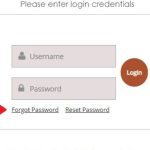In an era defined by the virtual workplace, remote teams have become a cornerstone of modern business operations. In fact, 59% of employees are more likely to work for an employer who offers remote work options as opposed to those who don’t. This statistic highlights the importance of offering remote work arrangements.
The rapid rise of remote work has ushered in a new era of flexibility and adaptability. While the benefits of remote work are evident reduced commute times, access to a global talent pool, and increased autonomy—it also brings a set of challenges. Among these challenges, one of the most pressing is the efficient tracking and management of time.
In this blog post, we delve into the intricacies of remote work and explore the pivotal role that time-tracking software plays in addressing its associated challenges. We will journey through the evolving landscape of virtual workspaces, uncover the hurdles they present for both employers and employees, and ultimately shed light on how time-tracking software empowers remote teams to not only overcome these obstacles but also thrive in the digital realm.
Join us as we navigate the intricate dynamics of remote work and discover how technology is shaping the future of productivity and accountability.
The Rise of Virtual Workspaces
Remote work has long been an established concept, but recent technological innovations have seen its evolution significantly accelerate. While working outside a traditional office setting is nothing new, digital tools and connectivity make remote work much more accessible than ever before.
However, it was the unexpected and unprecedented impact of the COVID-19 pandemic that truly accelerated the global shift toward remote work. With lockdowns and social distancing measures in place, companies across the world had no choice but to swiftly adapt to remote work to ensure business continuity.
Despite the easing of pandemic-related restrictions, the embrace of remote work as a long-term strategy remains widespread among organizations. As the lines between the physical and virtual office spaces blur, the need for effective time tracking becomes increasingly paramount to ensuring that remote teams maintain productivity and accountability. In this evolving landscape, productive time tracking software emerges as a vital tool, helping businesses navigate the challenges posed by remote work and harness the full potential of virtual workspaces.
Also Read: Top 5 Best Virtual Office Services In UK
Challenges of Managing Remote Teams
Managing remote teams in the virtual workspace comes with its own set of challenges, despite the undeniable benefits it brings, such as enhanced flexibility and the ability to tap into a global talent pool. One of the greatest obstacles facing managers when overseeing remote employees is monitoring and tracking productivity. In a traditional office, managers have the advantage of directly overseeing team members to ensure everyone is working effectively and efficiently.
However, the transition to virtual workspaces significantly limits this level of direct oversight, giving rise to concerns about how to maintain accountability, foster teamwork, and drive productivity when the boundaries between the physical and digital realms become less distinct. It is within this context that the adoption of effective time-tracking software becomes imperative to address the unique challenges presented by remote work.
The Importance of Time Tracking
Effective time management is critical to both remote employees and their employers, with employees benefiting from maintaining work-life balance and avoiding burnout while employers need it to ensure work is completed efficiently. Moreover, project planning and resource allocation are enhanced as a result of better time management practices.
Time-tracking software provides a solution to these challenges by offering transparency, accountability, and insights into how time is spent.
Benefits of Time-Tracking Software for Remote Teams
Transparency: Time-tracking software provides transparency into how employees spend their work hours. Team members can log their tasks and activities, making it easier for managers to understand where time is allocated.
Accountability: With time-tracking software, remote employees are held accountable for their work hours. This accountability encourages productivity and helps prevent time-wasting activities.
Project management: Time-tracking software integrates seamlessly with project management tools, allowing for better project planning and resource allocation. Managers can allocate tasks based on workload and deadlines more effectively.
Data-driven insights: The data collected through time-tracking software can offer valuable insights into productivity trends, helping organizations make data-driven decisions and optimize their workflows.
Choosing the Right Time-Tracking Software
When it comes to time-tracking software for remote teams, several factors must be taken into consideration:
Ease of use: For maximum team productivity and success, all members should find it accessible regardless of technical knowledge.
Customizability: Look for time-tracking software that allows you to adapt its categories and settings according to the specific needs of your team.
Reporting: Robust reporting capabilities are essential to gaining insights into your team’s productivity and identifying areas for improvement.
Mobile accessibility: In a remote work environment, it’s crucial that employees can track their time from anywhere, including on mobile devices.
Privacy and security: Ensure that the software complies with data privacy regulations and offers robust security features to protect sensitive information.
Best Practices for Using Time-Tracking Software

Image Source : Pexels
To make the most of time tracking software for remote teams, it’s crucial to follow several best practices.
First, set clear expectations by communicating to your team why time tracking is important and how it benefits both employees and the organization. Secondly, ensure that all team members receive training on how to use the software effectively, and provide ongoing support and troubleshooting assistance to address any questions or concerns. Thirdly, utilize the insights gained from time-tracking data wisely by optimizing processes, allocating resources more efficiently, and identifying areas for improvement within your team’s workflows.
Moreover, respect employees’ privacy and use time-tracking data responsibly, refraining from punitive measures and instead using it as a tool for improvement. Lastly, periodically review your time-tracking processes to ensure they continue to meet your team’s evolving needs. These best practices will help your remote team leverage time-tracking software to its fullest potential while maintaining a productive and respectful work environment.
Also Read: Paytronix: The Ultimate Customer Engagement Platform
Final Thoughts
The rise of virtual workspaces has revolutionized the way we work, but it has also introduced challenges to managing remote teams effectively. Time-tracking software offers a practical solution to these challenges, providing transparency, accountability, and data-driven insights.
By choosing the right time-tracking software, overcoming resistance, and implementing best practices, remote teams can navigate the challenges of virtual workspaces and thrive in this new era of work. Embracing time-tracking software not only benefits employers but also empowers employees to work more efficiently and maintain a healthy work-life balance. In the ever-evolving landscape of remote work, time-tracking software is a valuable tool for success.
Igor Zagradanin is a content marketing expert with a proven track record of helping businesses by adding value to their brands, and content marketing strategies, as well as educating and connecting with their audiences on a personal level.






